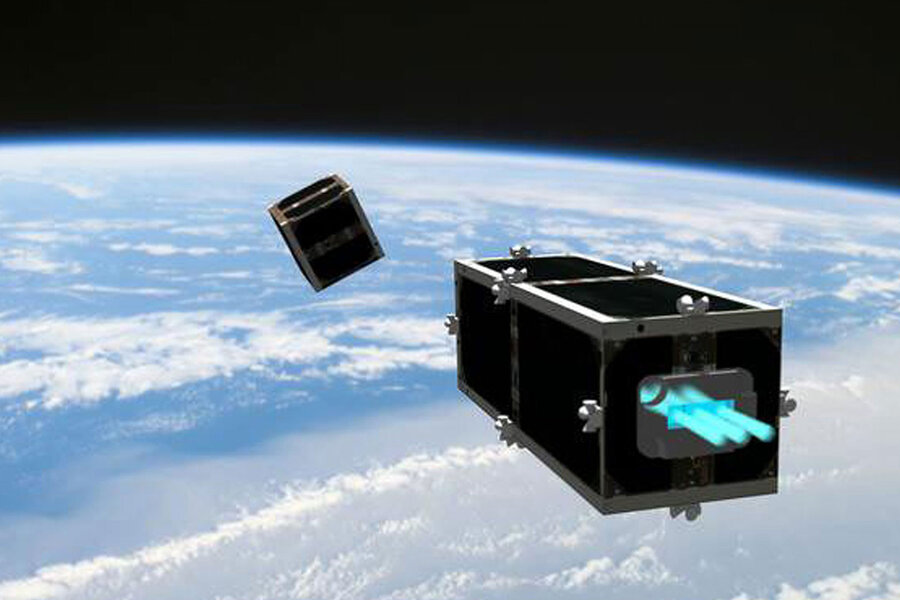Mysterious 'space balls' crash in Vietnam
Loading...
Several metal balls crash-landing in Vietnam have prompted investigation into their source, but the amount of debris orbiting Earth means the mystery may continue.
The Vietnamese Army arrived soon after reports of the balls' landing but quickly denied the objects were of military origin, lest frightened locals start a blame game, Agence France-Presse (AFP) reported.
"Before and after these objects were discovered, the Vietnamese Army was not conducting any military activity in the region," Lieutenant General Vo Van Tuan, the Vietnamese Army spokesman, told AFP. "We are still identifying where they came from."
Two large metal balls landed in Yen Bai province of Vietnam, and a third ball struck a field of maize in the neighboring province of Tuyen Quang, Thuy Hang reported for Thanh Nien News. The largest ball weighs about 100 pounds.
The Ministry of Defense has the objects in custody and promised to release details about their origin. The only report so far is that they are not explosive or – now that they've stopped falling – dangerous. They are probably Russian-made and could originate from a failed satellite launch in another country, CBC News reported.
Bits of space junk fall from the sky intermittently as an estimated 500,000 pieces of debris continues to clutter the area of "near space" around the Earth. Although space is vast and mostly empty, the "near space" immediately surrounding Earth is increasingly crowded. NASA tracks roughly 20,000 pieces of old or broken debris larger than a softball from satellites and missions past.
This leads to concerns that debris will not only drop into fields in Vietnam, but also collide with spacecraft and satellites occasionally. Concerns were highlighted in 2007 when China's first successful test of an anti-satellite weapon alarmed the international community and added as much as 10 percent to the debris in Earth's near-space area.
This leaves countries with interests above the Earth's atmosphere several options for solutions. These issues in part prompted a special hotline for space-related discussions between China and the United States in November, The Christian Science Monitor reported.
The US Department of Defense maintains a monitoring system for space debris and often informs the owners of foreign satellites when a collision is imminent. The US Air Force and NASA can only track the larger pieces, however, and tiny pebbles can also damage the International Space Station and orbiting vehicles.
"Even tiny paint flecks can damage a spacecraft when traveling at these velocities," Mark Garcia wrote in a NASA statement. "In fact, a number of space shuttle windows have been replaced because of damage caused by material that was analyzed and shown to be paint flecks."
Other responses are more high-tech. The Clean Space One project is a proposed flying space debris clean-up net researchers have been working on for three years with Ecole Polytechnique Fédérale de Lausanne's Center for Space Engineering and Signal Processing 5 Laboratory, eSpace, and HES-SO University of Applied Sciences and Arts Western Switzerland, Leonard David wrote for Space.com. It is a delicate operation and still in progress.
"It only takes one error in the calculation of the approach for SwissCube [a small satellite launched in 2009] to bounce off CleanSpace One and rocket out into space," Muriel Richard-Noca, head of the project, told Space.com.








